Surgery for women with apical vaginal prolapse
- PMID: 37493538
- PMCID: PMC10370901
- DOI: 10.1002/14651858.CD012376.pub2
Surgery for women with apical vaginal prolapse
Abstract
Background: Apical vaginal prolapse is the descent of the uterus or vaginal vault (post-hysterectomy). Various surgical treatments are available, but there are no guidelines to recommend which is the best.
Objectives: To evaluate the safety and efficacy of any surgical intervention compared to another intervention for the management of apical vaginal prolapse.
Search methods: We searched the Cochrane Incontinence Group's Specialised Register of controlled trials, which contains trials identified from the Cochrane Central Register of Controlled Trials (CENTRAL), MEDLINE, ClinicalTrials.gov, WHO ICTRP and handsearching of journals and conference proceedings and ClinicalTrials.gov (searched 14 March 2022).
Selection criteria: We included randomised controlled trials (RCTs).
Data collection and analysis: We used Cochrane methods. Our primary outcomes were awareness of prolapse, repeat surgery and recurrent prolapse (any site).
Main results: We included 59 RCTs (6705 women) comparing surgical procedures for apical vaginal prolapse. Evidence certainty ranged from very low to moderate. Limitations included imprecision, poor methodology, and inconsistency. Vaginal procedures compared to sacral colpopexy for vault prolapse (seven RCTs, n=613; six months to f four-year review) Awareness of prolapse was more common after vaginal procedures (risk ratio (RR) 2.31, 95% confidence interval (CI) 1.27 to 4.21, 4 RCTs, n = 346, I2 = 0%, moderate-certainty evidence). If 8% of women are aware of prolapse after sacral colpopexy, 18% (10% to 32%) are likely to be aware after vaginal procedures. Surgery for recurrent prolapse was more common after vaginal procedures (RR 2.33, 95% CI 1.34 to 4.04; 6 RCTs, n = 497, I2 = 0%, moderate-certainty evidence). The confidence interval suggests that if 6% of women require repeat prolapse surgery after sacral colpopexy, 14% (8% to 25%) are likely to require it after vaginal procedures. Prolapse on examination is probably more common after vaginal procedures (RR 1.87, 95% CI 1.32 to 2.65; 5 RCTs, n = 422; I2 = 24%, moderate-certainty evidence). If 18% of women have recurrent prolapse after sacral colpopexy, between 23% and 47% are likely to do so after vaginal procedures. Other outcomes: Stress urinary incontinence (SUI) was more common after vaginal procedures (RR 1.86, 95% CI 1.17 to 2.94; 3 RCTs, n = 263; I2 = 0%, moderate-certainty evidence). The effect of vaginal procedures on dyspareunia was uncertain (RR 3.44, 95% CI 0.61 to 19.53; 3 RCTs, n = 106, I2 = 65%, low-certainty evidence). Vaginal hysterectomy compared to sacral hysteropexy/cervicopexy (six RCTS, 554 women, one to seven year review) Awareness of prolapse - There may be little or no difference between the groups for this outcome (RR 1.01 95% CI 0.10 to 9.98; 2 RCTs, n = 200, very low-certainty evidence). Surgery for recurrent prolapse - There may be little or no difference between the groups for this outcome (RR 0.85, 95% CI 0.47 to 1.54; 5 RCTs, n = 403; I2 = 9%, low-certainty evidence). Prolapse on examination- there was little or no difference between the groups for this outcome (RR 0.78, 95% CI 0.54 to 1.11; 2 RCTs n = 230; I2 = 9%, moderate-certainty evidence). Vaginal hysteropexy compared to sacral hysteropexy/cervicopexy (two RCTs, n = 388, 1-four-year review) Awareness of prolapse - No difference between the groups for this outcome (RR 0.55 95% CI 0.21 to 1.44; 1 RCT n = 257, low-certainty evidence). Surgery for recurrent prolapse - No difference between the groups for this outcome (RR 1.34, 95% CI 0.52 to 3.44; 2 RCTs, n = 345; I2 = 0%, moderate-certainty evidence). Prolapse on examination- There were little or no difference between the groups for this outcome (RR 0.99, 95% CI 0.83 to 1.19; 2 RCTs n =367; I2 =9%, moderate-certainty evidence). Vaginal hysterectomy compared to vaginal hysteropexy (four RCTs, n = 620, 6 months to five-year review) Awareness of prolapse - There may be little or no difference between the groups for this outcome (RR 1.0 95% CI 0.44 to 2.24; 2 RCTs, n = 365, I2 = 0% moderate-quality certainty evidence). Surgery for recurrent prolapse - There may be little or no difference between the groups for this outcome (RR 1.32, 95% CI 0.67 to 2.60; 3 RCTs, n = 443; I2 = 0%, moderate-certainty evidence). Prolapse on examination- There were little or no difference between the groups for this outcome (RR 1.44, 95% CI 0.79 to 2.61; 2 RCTs n =361; I2 =74%, low-certainty evidence). Other outcomes: Total vaginal length (TVL) was shorter after vaginal hysterectomy (mean difference (MD) 0.89cm 95% CI 0.49 to 1.28cm shorter; 3 RCTs, n=413, low-certainty evidence). There is probably little or no difference between the groups in terms of operating time, dyspareunia and stress urinary incontinence. Other analyses There were no differences identified for any of our primary review outcomes between different types of vaginal native tissue repair (4 RCTs), comparisons of graft materials for vaginal support (3 RCTs), pectopexy versus other apical suspensions (5 RCTs), continuous versus interrupted sutures at sacral colpopexy (2 RCTs), absorbable versus permanent sutures at apical suspensions (5 RCTs) or different routes of sacral colpopexy. Laparoscopic sacral colpopexy is associated with shorter admission time than open approach (3 RCTs) and quicker operating time than robotic approach (3 RCTs). Transvaginal mesh does not confer any advantage over native tissue repair, however is associated with a 17.5% rate of mesh exposure (7 RCTs).
Authors' conclusions: Sacral colpopexy is associated with lower risk of awareness of prolapse, recurrent prolapse on examination, repeat surgery for prolapse, and postoperative SUI than a variety of vaginal interventions. The limited evidence does not support the use of transvaginal mesh compared to native tissue repair for apical vaginal prolapse. There were no differences in primary outcomes for different routes of sacral colpopexy. However, the laparoscopic approach is associated with a shorter operating time than robotic approach, and shorter admission than open approach. There were no significant differences between vaginal hysteropexy and vaginal hysterectomy for uterine prolapse nor between vaginal hysteropexy and abdominal hysteropexy/cervicopexy. There were no differences detected between absorbable and non absorbable sutures however, the certainty of evidence for mesh exposure and dyspareunia was low.
Trial registration: ClinicalTrials.gov NCT01095692.
Copyright © 2023 The Cochrane Collaboration. Published by John Wiley & Sons, Ltd.
Conflict of interest statement
The lead review author, Christopher Maher, is an author of two of the included trials (Maher 2004; Maher 2011). No authors have any conflict of interest to declare.
Figures
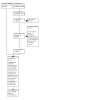
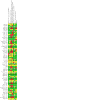

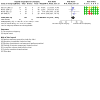

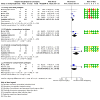

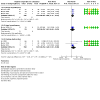
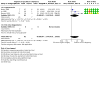


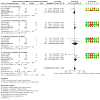

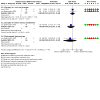
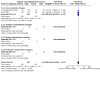
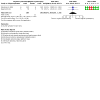

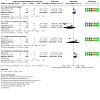
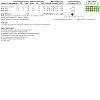




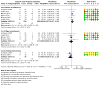

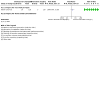
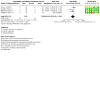
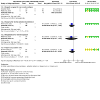
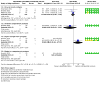
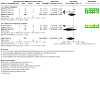
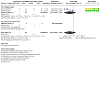


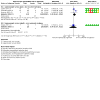

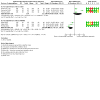

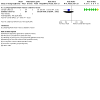
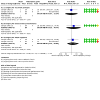
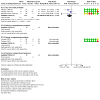




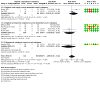
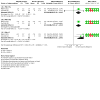



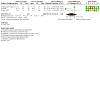
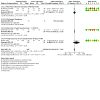

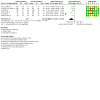
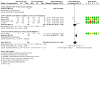
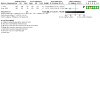
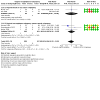


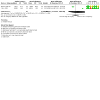

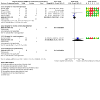
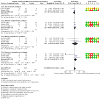
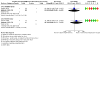
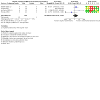
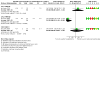


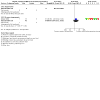



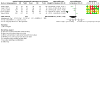
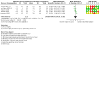
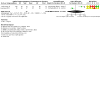





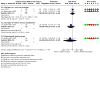
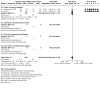
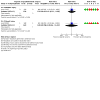


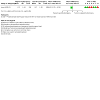

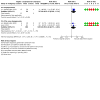

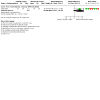








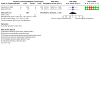
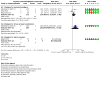
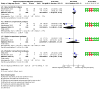



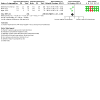

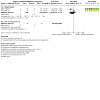











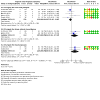
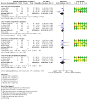
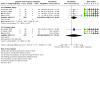

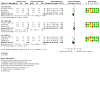


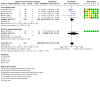
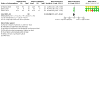


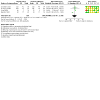







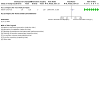
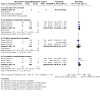

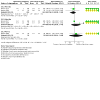
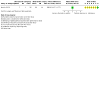

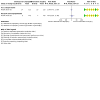









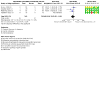
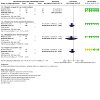
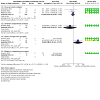
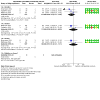
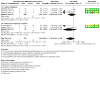

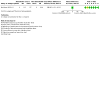

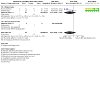
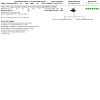


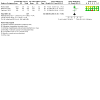
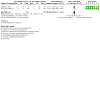
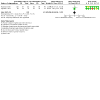



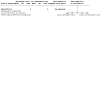

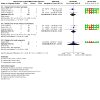
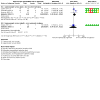
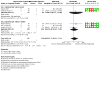


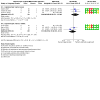
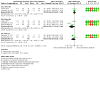
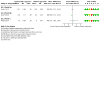


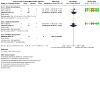
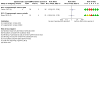

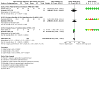
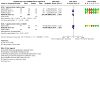

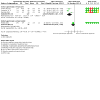
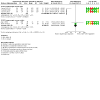

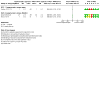


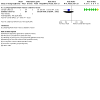
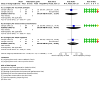
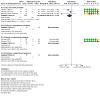
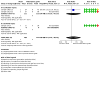
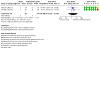
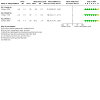


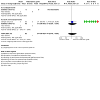




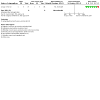







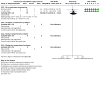
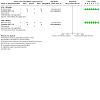








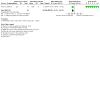








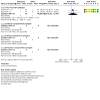
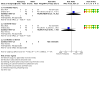
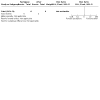


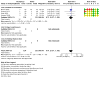
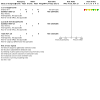

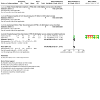

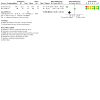

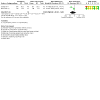

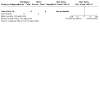


Update of
-
Surgery for women with apical vaginal prolapse.Cochrane Database Syst Rev. 2016 Oct 1;10(10):CD012376. doi: 10.1002/14651858.CD012376. Cochrane Database Syst Rev. 2016. Update in: Cochrane Database Syst Rev. 2023 Jul 26;7:CD012376. doi: 10.1002/14651858.CD012376.pub2. PMID: 27696355 Free PMC article. Updated.
References
References to studies included in this review
Alvarez 2020 {published data only}
-
- Alvarez J, Garcia-Huidobro A, Urzua M J, Rondini C, Monroy M, Garate M J, et al. Permanent versus delayed absorbable suture at the time of uterosacral ligament suspension for a transvaginal apical repair: a prospective randomized trial with a 40 months mean follow-up. International Urogynecology Journal 2020;31(SUPPL 1):S5.
-
- Urzua MJ, Rondini C, Alvarez J, Braun H, Martinez P, Kaplan F. Permanent versus delayed absorbable suture in uterosacral ligament suspension for the apical compartment: A prospective randomized study with a 24 months mean follow-up. International Urogynecology Journal and Pelvic Floor Dysfunction 2015;26(1 SUPPL. 1):S27-9.
Anger 2014 {published data only}
Barber 2014 {published data only}
-
- Jelovsek J E, Barber MD, Brubaker L, Norton P, Gantz M, Richter H E, et al. Effect of uterosacral ligament suspension vs sacrospinous ligament fixation with or without perioperative behavioral therapy for pelvic organ vaginal prolapse on surgical outcomes and prolapse symptoms at 5 years in the optimal randomized clinical trial. JAMA 2018;319(15):1554-65. - PMC - PubMed
Bataller 2019 {published data only}
-
- Angles-Acedo S, Ros-Cerro C, Escura-Sancho S, Palau-Pascual MJ, Bataller-Sanchez E, Espuna-Pons M, et al. Female sexuality before and after sacrocolpopexy or vaginal mesh: is vaginal length one of the key factors? International Urogynecology Journal 2022;33(1):143-52. - PubMed
-
- Angles-Acedo S, Ros-Cerro C, Escura-Sancho S, Palau-Pascual MJ, Bataller-Sanchez E, Espuna-Pons M, et al. Sexual activity and function in women with POP and high risk of recurrence, before and after laparoscopic versus vaginal mesh: a randomised controlled trial. International Urogynecology Journal 2020;31(SUPPL 1):S14.
-
- Bataller E, Ros C, Angles S, Gallego M, Espuna-Pons M, Carmona F. Anatomical outcomes 1 year after pelvic organ prolapse surgery in patients with and without a uterus at a high risk of recurrence: a randomised controlled trial comparing laparoscopic sacrocolpopexy/cervicopexy and anterior vaginal mesh [ Int Urogynecol J. 2019 Apr;30(4):545-555. doi: 10.1007/s00192-018-]. Inernational Urogynecology Journal 2019;30(4):545-55. - PubMed
-
- Ros-Cerro C, Bataller E, Angles S, Elias N, Gallego M, Espuna-Pons M, et al. Laparoscopic sacral colpopexy versus anterior vaginal mesh in patients with pelvic organ prolapse with high-risk of recurrence: a randomised controlled trial (Abstract number 710). Neurourology and Urodynamics 2017;36(Suppl S3):S507-8.
Benson 1996 {published and unpublished data}
-
- Benson JT, Lucente V, McClellan E. Vaginal versus abdominal reconstructive surgery for the treatment of pelvic support defects: a prospective randomized study with long-term outcome evaluation. American Journal of Obstetrics and Gynecology 1996;175(6):1418-22. [4815] - PubMed
Berger 2020 {published data only}
-
- Berger AA, Tan-Kim J, Menefee SA. Anchor versus suture for attachment of vaginal mesh in robotic-assisted sacrocolpopexy: a randomized clinical trial. American Journal of Obstetrics and Gynecology 2020;223(2):258.e1-8. - PubMed
Brueseke 2019 {published data only}
-
- Brueseke T, Matthews C, Willis-Gray M, Knight S, Nieto M L, Geller E. Analysis of robotic procedural times using colpassist versus end-to-end anastomosis sizer for robotic-assisted sacrocolpopexy: a randomized controlled trial. Female Pelvic Medicine & Reconstructive Surgery 2019;25(2):e12-7. - PubMed
Castro 2021 {published data only}
-
- Castro RA, Bortolini M AT, Pascom A LG, Ledesma M, Sardi J JL, Monteiro M VC, et al. Vaginal sacrospinous ligament fixation using tissue anchoring system versus a traditional technique for women with apical vaginal prolapse: a randomized controlled trial. Female Pelvic Medicine & Reconstructive Surgery 2021;27(1):e215-22. - PubMed
Cengiz 2021 {published data only}
-
- Cengiz H, Yildiz S, Alay I, Kaya C, Eren E, Iliman D. Vaginal-assisted laparoscopic sacrohysteropexy and vaginal hysterectomy with vaginal vault suspension for advanced uterine prolapse: 12-month preliminary results of a randomized controlled study. Gynecology and Minimally Invasive Therapy 2021;10(1):30-6. - PMC - PubMed
Coolen 2017 {published data only}
-
- Oudheusden AM, Elssing J, Terink IM, Vink, MD, Kuljk SM, Bonjers MY, Coolem AW. Laparoscopic sacrocolpopexy versus abdominal sacrocolpopexy for vaginal vault prolapse: long-term follow-up of a randomimized controlled trial. International Urogynaecology Journal online 16th september 2022;online ahead of print:Epub ahead of print. - PMC - PubMed
Costantini 2016 {published data only}
-
- Costantini E, Mearini L, Lazzeri M, Bini V, Nunzi E, Di Biase M, et al. Laparoscopic versus abdominal sacrocolpopexy: a randomized controlled trial. Journal of Urology 2016;196(1):159-65. - PubMed
-
- Costantini E, Pietropaolo A, Nunzi E, Bini V, Salvini E, Bruno R, et al. Prospective randomized trial comparing abdominal vs laparoscopic sacropexy for the treatment of advanced pelvic organ prolapse (Abstract number 61). Neurourology and Urodynamics 2013;32(S1):S55-6.
Culligan 2005 {published data only}
-
- Culligan P, Blackwell L, Goldsmith J, Rogers A, Heit M. A double-blind, randomized controlled trial comparing solvent-dehydrated cadaveric fascia lata and polypropylene mesh for sacral colpopexy. In: Proceedings of the Joint Meeting of the International Continence Society (34th Annual Meeting) and the International Urogynecological Association, 2004 Aug 23-27, Paris. 2004.
-
- Culligan PJ, Blackwell L, Goldsmith LJ, Graham CA, Rogers A, Heit MH. A randomized controlled trial comparing fascia lata and synthetic mesh for sacral colpopexy. Obstetrics and Gynecology 2005;106(1):29-37. - PubMed
-
- Tate SB, Blackwell L, Lorenz DJ, Steptoe MM, Culligan PJ. Randomized trial of fascia lata and polypropylene mesh for abdominal sacrocolpopexy: 5-year follow-up. International Urogynecology Journal 2011;22(2):137-43. - PubMed
Culligan 2013 {published data only}
-
- Culligan P, Salamon C, Priestley J, Shariati A. Porcine Dermis compared with polypropylene mesh for laparoscopic sacrocolpopexy. Obstetrics and Gynecology 2013;121:143-51. - PubMed
Daneshpajooh 2022 {published data only}
-
- Daneshpajooh A, Pakmanesh H, Sohbati S, Mirzaei M, Zemanati E, Dehesh T. Comparing Laparoscopic Sacrocolpopexy with Vaginal Sacrospinous Ligament Fixation in the Treatment of Vaginal Apical Prolapse; the First Randomized Clinical Trial: a pilot study. Urology Journal 2022;19(2):131-7. - PubMed
da Silviera 2015 {published data only}
-
- Dos Reis Brandão da Silveira S, Haddad JM, Jármy-Di Bella Z, Nastri F, Kawabata M, da Silva Carramão S, et al. Multicenter, randomised trial comparing native vaginal tissue repair and synthetic mesh repair for genital prolapse surgical treatment. International Urogynecology Journal 2015;26(3):335-42. - PubMed
-
- da Silveira SD, Auge AP, Jarmy-Dibella ZI, Margarido PF, Carramao S, Alves Rodrigues C, , et al. A multicenter, randomized trial comparing pelvic organ prolapse surgical treatment with native tissue and synthetic mesh: A 5-year follow-up study. Neurourology and Urodynamics 27 Feb 2020;39(3):1002-11. - PubMed
de Castro 2020 {published data only}
-
- Castro EB, Brito LG, Juliato CR. Vaginal hysterectomy with bilateral sacrospinous fixation plus an anterior mesh versus abdominal sacrocervicopexy for the treatment of primary apical prolapse in postmenopausal women: a randomized controlled study. International Urogynecology Journal and Pelvic Floor Dysfunction 2020;31(2):365-72. - PubMed
de Tayrac 2008 {published data only}
-
- Tayrac R, Mathe ML, Bader G, Deffieux X, Fazel A, Fernandez H. Infracoccygeal sacropexy or sacrospinous suspension for uterine or vaginal vault prolapse. International Urogynecology Journal 2008;100(2):154-9. - PubMed
Detollenaere 2015 {published data only}
-
- Detollenaere RJ, KreuwelI, Dijkstra JR, Kluivers K B, Eijndhoven HW. The impact of sacrospinous hysteropexy and vaginal hysterectomy with suspension of the uterosacral ligaments on sexual function in women with uterine prolapse: a secondary analysis of a randomized comparative studympact of Sacrospinous Hysteropexy and Vaginal Hysterectomy With Suspension of the Uterosacral Ligaments on Sexual Function in Women With Uterine Prolapse: A Secondary Analysis of a Randomized Comparative Study. Journal of Sexual Medicine 2016;13(2):213-9. - PubMed
-
- Detollenaere RJ, den Boon J, Stekelenburg J, IntHout J, Vierhout ME, Kluivers KB, et al. Sacrospinous hysteropexy versus vaginal hysterectomy with suspension of the uterosacral ligaments in women with uterine prolapse stage 2 or higher: multicentre randomised non-inferiority trial. BMJ May- June 2015;351(5-6):E400-6. - PMC - PubMed
-
- Schulten SF, Detollenaere R J, Stekelenburg J, IntHout J, Kluivers K B, Eijndhoven HW. Sacrospinous hysteropexy versus vaginal hysterectomy with uterosacral ligament suspension in women with uterine prolapse stage 2 or higher: observational follow-up of a multicentre randomised trial. BMJ 2019;366:l5149. - PMC - PubMed
Dietz 2010 {published data only}
Dursun 2020 {published data only}
-
- Dursun F, Lewis K, Lee T, Kilic G. 29: effect of tunneling on colorectal and prolapse symptoms during sacrocolpopexy. American Journal of Obstetrics and Gynecology 2020;222(3):S792.
Ferrando 2019 {published data only}
-
- Ferrando CA, Paraiso MF. A prospective randomized trial comparing Restorelle Y Mesh and Flat Mesh for laparoscopic and robotic-assisted laparoscopic sacrocolpopexy. Female Pelvic Medicine and Reconstructive Surgery 2019;25(2):83-7. - PubMed
Freeman 2013 {published data only}
-
- Freeman RM, Pantazis K, Thomson A, Frapell J, Bombieri L, Moran P, et al. A randomised controlled trial of abdominal versus laparoscopic sacrocolpopexy for the treatment of post-hysterectomy vaginal vault prolapse: LAS study. International Urogynecology Journal 2013;24(3):377-84. [DOI: 10.1007/s00192-012-1885-x] [46279] - DOI - PubMed
-
- Pantazis K, Freeman R, Thomson A, Frappell J, Bombieri L, Moran P, et al. Open and laparoscopic sacrocolpopexy demonstrate clinical equivalence: one year results from the LAS Trial, an RCT comparing the two approaches for treating post hysterectomy vault prolapse (Abstract number 131). Neurourology and Urodynamics 2011;30(6):986-7. [42187]
-
- Pantazis K, Freeman R, Thomson A, Frappell J, Bombieri L, Waterfield M. Results from the LAS trial, an RCT comparing open abdominal to laparoscopic sacrocolpopexy for the treatment of post hysterectomy vault prolapse (Abstract number 120). International Urogynecology Journal 2008;19 Suppl 1:101-2. [29178]
Fuschi 2022 {published data only}
-
- Fuschi A, Martoccia A, Al Salhi Y, Maggi M, Capone L, Suraci PP, et al. Sexual and functional outcomes after prolapse surgery: a randomized prospective comparison of trocarless transvaginal mesh and pelvic organ prolapse suspension. Langenbeck's archives of surgery / Deutsche Gesellschaft fur Chirurgie 2022;407(4):1693-700. - PubMed
Galad 2020 {published data only}
-
- Galad J, Papcun P, Dudic R, Urdzik P. Singleincision mesh vs sacrospinous ligament fixation in posthysterectomy women at a three-year follow-up: a randomized trial. Bratislavske lekarske listy 2020;121(9):640-7. - PubMed
Ghaleb 2021 {published data only}
-
- Ghaleb M, Abd El-Hameed, Abdel Kadar A, Mokhtar M, Mamdouh A. Abdominl Pectopexy versus abdominal sacral hysteropexy as conservative surgeries for genital prolapse: A randomized control trial. Gynecology and Obstetrics Medical Project 2021;3(6):001-7.
Halaska 2012 {published data only}
-
- Halaska M, Maxova K, Sottner O, Svabik K, Mlcoch M, Kolarik D, et al. A multicentre randomized prospective controlled study comparing sacrospinous fixation and transvaginal mesh in the treatment of post hysterectomy vaginal vault prolapse. American Journal of Obstetrics and Gynecology 2012;207(301):e1-7. - PubMed
Iglesia 2010 {published data only}
-
- Gutman R, Nosti P, Sokol A, Sokol E, Peterson J, Wang H, et al. Three-year outcome of vaginal mesh for prolapse, A randomized controlled trial. Obstetrics and Gynecology 2013;122(4):770-7. [CLINICALTRIALS.GOV: NCT00475540] - PubMed
-
- Iglesia CB, Sokol AI, Sokol ER, Kudish BI. Vaginal mesh for prolapse: a randomized controlled trial. Obstetrics and Gynecology 2010;116(2 Pt 1):293-303. [39891] - PubMed
Illiano 2019 {published data only}
-
- Illiano E, Ditonno P, Giannitsas K, De Rienzo G, Bini V, Costantini E. Robot-assisted vs laparoscopic sacrocolpopexy for high-stage pelvic organ prolapse: a prospective, randomized, single-center study. Urology 2019;134:116-23. - PubMed
Illiano 2020 {published data only}
-
- Illiano E, Natale F, Marchesi A, Zucchi A, Costantini E, Motta G. Total versus subtotal hysterectomy associated with laparoscopic colposacropexy: a prospective randomized controlled trial (Abstract number MP05-13). Journal of Urology 2020;203(Suppl 4):e46.
Jeng 2005 {published data only}
-
- Jeng CJ, Yang YC, Tzeng CR, Shen J, Wang LR. Sexual functioning after vaginal hysterectomy or transvaginal sacrospinous uterine suspension for uterine prolapse: a comparison. Journal of Reproductive Medicine 2005;50(9):669-74. - PubMed
Jooyoung 2021 {published data only}
-
- Jooyoung K, Hoon SD. Long-term effectiveness of minimally invasive sacrohysteropexy versus vaginal hysterectomy for uterovaginal pro-lapse: an interim analysis of randomized controlled trial. Journal of Obstetrics and Gynaecology Research 2021;47(8):2933.
Kowalski 2021 {published data only}
-
- Kowalski JT, Genadry RR, TenEyck PP, Bradley CS. A randomized controlled trial of permanent vs absorbable suture for uterosacral ligament suspension (Abstract number: long oral 26). Female Pelvic Medicine & Reconstructive Surgery 2019;25(5 Suppl 1):S13.
Kruger 2018 {published data only}
-
- Kruger P, Muavha D, Gerretsen V, Roovers J, Ras L, Jeffery S. Comparison of long-term outcomes between two sacrospinous suture capture devices: a randomized controlled trial (Abstract number 550). International Urogynecology Journal 2018;29(Suppl 1):S272.
Lo 1998 {published data only}
-
- Lo TS, Wang AC. Abdominal colposacropexy and sacrospinous ligament suspension for severe uterovaginal prolapse: a comparison. Journal of Gynecologic Surgery 1998;14(2):59-64. [17553]
Lucot 2022 {published data only}
-
- Lucot JP, Cosson M, Bader G, Debodinance P, Akladios C, Salet-Lizee D, et al. Safety of vaginal mesh surgery versus laparoscopic mesh sacropexy for cystocele repair: results of the Prosthetic Pelvic Floor Repair Randomized Controlled Trial. European Urology 2018;74(2):167-76. - PubMed
-
- Lucot JP, Cosson M, Verdun S, Debodinance P, Bader G, Campagne-Loiseau S, et al. Long-term outcomes of primary cystocele repair by transvaginal mesh surgery versus laparoscopic mesh sacropexy: extended follow up of the PROSPERE multicentre randomised trial. BJOG 2022;129(1):127-37. - PubMed
Maher 2004 {published and unpublished data}
-
- Maher CF, Qatawneh AM, Dwyer PL, Carey MP, Cornish A, Schluter PJ. Abdominal sacral colpopexy or vaginal sacrospinous colpopexy for vaginal vault prolapse: A prospective randomized study. American Journal of Obstetrics and Gynecology 2004;190(1):20-6. - PubMed
Maher 2011 {published data only}
-
- Maher C, Connelly L. Cost minimization analysis of laparoscopic sacral colpopexy and total vaginal mesh. American Journal of Obstetrics and Gynecology 2012;206(5):1-7. - PubMed
-
- Maher CF, Feiner B, Decuyper EM, Nichlos CJ, Hickey KV, O'Rourke P. Laparoscopic sacral colpopexy versus total vaginal mesh for vaginal vault prolapse: a randomized trial. American Journal of Obstetrics and Gynecology 2011;204(4):e361-7. [41344] - PubMed
Malanowska 2021 {published data only}
-
- Malanowska E, Rubilotta E, Starczewski A, Balzarro M. Outcomes and learning curve of laparoscopic lateral suspension versus laparoscopic sacrocervicopexy for pelvic organ prolapse: a randomized clinical trial (Abstract number 25). Neurourology and Urodynamics 2020;39(Suppl 4):S38-40.
-
- Malanowska E, Starczewski A, Torrazzina M, Rubilotta E, Balzarro M. Changes in sexual function following sacrocervicopexy and lateral suspension for the treatment of pelvic organ prolapse. Neurourology and Urodynamics 2021;Conference: 45th Annual Congress of the Italian Urodynamic Society. Virtual. 40(SUPPL 3):S27-8.
Martins 2020 {published data only}
-
- Martins S, Sartori M. Fixation of the vaginal vault using the sacrospinhal ligament or the uterosacral ligaments (modified McCall) during the vaginal histerectomy of patients with stage uterine prolapse III and IV (Abstract number 478). International Urogynecology Journal 2020;31(SUPPL 1):S220.
Matanes 2020 {published data only}
-
- Matanes E, Boulus S, Lauterbach R, Amit A, Weiner Z, Lowenstein L. Robotic laparoendoscopic single-site compared with robotic multi-port sacrocolpopexy for apical compartment prolapse. American Journal of Obstetrics and Gynecology 2020;222(4):358.e1-358.e11. - PubMed
Matthews 2020 {published data only}
-
- Matthews CA, Geller EJ, Henley BR, Kenton K, Myers EM, Dieter AA, et al. Permanent compared with absorbable suture for vaginal mesh fixation during total hysterectomy and sacrocolpopexy: a randomized controlled trial. Obstetrics and Gynecology 2020;136(2):355-64. - PubMed
Meschia 2004 {published and unpublished data}
-
- Meschia M, Gattei U, Pifarotti P, Spennacchio M, Longatti D, Barbacini P. Randomized comparison between infracoccygeal sacropexy (posterior IVS) and sacrospinous fixation in the management of vault prolapse (Abstract number 614). In: Proceedings of the Joint Meeting of the International Continence Society (34th Annual Meeting) and the International Urogynecological Association, 2004 Aug 23-27, Paris. 2004.
Morciano 2018 {published data only}
-
- Morciano A, Marzo G, Caliandro D, Campagna G, Panico G, Alcaino S, et al. Laparoscopic sacral colpopexy and a new approach to mesh fixation: a randomized clinical trial. Archives of Gynecology and Obstetrics 2018;298(5):939-44. - PubMed
Nager 2019 {published data only}
-
- Nager CW, Visco AG, Richter HE, Rardin C R, Komesu Y, Harvie HS, et al. Effect of sacrospinous hysteropexy with graft vs vaginal hysterectomy with uterosacral ligament suspension on treatment failure in women with uterovaginal prolapse: 5-year results of a randomized clinical trial. American Journal of Obstetrics and Gynecology 2021;225(2):153.e1-153.e31. - PMC - PubMed
-
- Nager CW, Visco AG, Richter HE, Rardin CR, Rogers RG, Harvie HS, et al. Effect of vaginal mesh hysteropexy vs vaginal hysterectomy with uterosacral ligament suspension on treatment failure in women with uterovaginal prolapse: a randomized clinical trial [Erratum published in: Error in results section. JAMA. 2021;325(7):696. d. JAMA 2019;322(11):1054-65. - PMC - PubMed
Natale 2010 {published and unpublished data}
-
- Natale F, Mako A, Panei M, Weir J, Antomarchi F, Cervigni M. High levator myorraphy versus uterosacral ligament suspension for vaginal vault fixation: a prospective, randomized study. International Urogynecology Journal 2010;21(5):515-22. - PubMed
Obut 2021 {published data only}
Ow 2018 {published data only}
-
- Lim A, Rosamilia PL, Dwyer J, Alvarez F, Chao C, Murray A, et al. Randomised controlled trial of post- hysterectomy vaginal vault prolapse treatment with extraperitoneal vaginal uterosacral ligament suspension with anterior mesh reinforcement vs sacrocolpopexy (open/laparoscopic). International Urogynecology Journal 2012;23:S151.
-
- Ow L, Lim YN, Lee J, Murray C, Thomas E, Leitch A, et al. RCT of vaginal extraperitoneal uterosacral ligament suspension (VEULS) with anterior mesh versus sacrocolpopexy: 4-year outcome. International Urogynecology Journal and Pelvic Floor Dysfunction 2018;29(11):1607-14. - PubMed
Paraiso 2011 {published data only}
-
- Paraiso MF, Jelovsek JE, Frick A, Chen CC, Barber MD. Conventional laparoscopic versus robotic-assisted laparoscopic sacral colpopexy: a randomized controlled trial (Abstract number 108). Neurourology and Urodynamics 2010;29(6):964-5. [40137]
-
- Paraiso MF, Jelovsek JE, Frick A, Chen CC, Barber MD. Laparoscopic compared with robotic sacral colpopexy for vaginal prolapse. A randomised controlled trial. Obstetrics and Gynecology 2011;118(5):1005-13. [42679] - PubMed
Rahmanou 2015 {published data only}
-
- Rahmanou P, Price N, Jackson SR. Laparoscopic hysteropexy versus vaginal hysterectomy for the treatment of uterovaginal prolapse: a prospective randomized pilot study. International Urogynecology Journal 2015;26(11):1687-94. - PubMed
Rajamaheswari 2018 {published data only}
-
- Rajamaheswari N, Seethalakshmi K, Meena M. Randomized controlled trial comparing the efficacy of fascia lata with synthetic mesh in abdominal sacrocolpopexy (Abstract number 540). International Urogynecology Journal 2018;29(Suppl 1):S267-8.
Reisenauer 2021 {published data only}
-
- Reisenauer C, Andress J, Schoenfisch B, Huebner M, Brucker S Y, Lippkowski A, et al. Absorbable versus non-absorbable sutures for vaginal mesh attachment during sacrocolpopexy: a randomized controlled trial. International Urogynecology Journal 2021;33:411-9. - PubMed
Rondini 2015 {published data only}
-
- Rondini C, Braun H, Alvarez J, Descouvieres C, Wenzel C, Aros S. Prospective-randomized study comparing high uterosacral vault suspension vs. abdominal sacrocolpopexy for the repair of apical defects and vaginal vault prolapse (Abstract number 90). Neurourology and Urodynamics 2010;29(6):939. [40132]
-
- Rondini C, Braun H, Alvarez J, Urzúa MJ, Villegas R, Wenzel C, et al. High uterosacral vault suspension vs Sacrocolpopexy for treating apical defects: a randomized controlled trial with twelve months follow-up. International Urogynecology Journal 2015;26(8):1131-8. - PubMed
-
- Rondini C, Braun HF, Alvarez J, Urzua M, Villegas R, Escobar M, et al. Prospective-randomised study comparing high uterosacral vault suspension vs abdominal sacral colpopexy for the correction of apical defects and vaginal vault prolapse (Abstract number: presentation 88). International Urogynecology Journal and Pelvic Floor Dysfunction 2011;22 Suppl 1:S87-8. [42160]
-
- Rondini C, Urzua M, Braun H, Errazuriz J, Casteblanco V, Alvarez J, et al. Longterm prospective randomized study comparing high uterosacral vault suspension verus abdominal sacral colpopexy for the correction of apical defects and vaginal vault prolapse: four year follow up. International Urogynecology Journal 2013;24(004):S151-2.
Roovers 2004 {published and unpublished data}
-
- Roovers J, Bleijenberg E, Schagen van Leeuwen J, Scholten P, Vaart H. Long term follow-up of a randomized controlled trial comparing abdominal and vaginal surgical correction of uterine prolapse (Abstract number 88). International Urogynecology Journal 2008;19 Suppl 1:91-2.
-
- Roovers JP, Vaart CH, Bom JG, Schagen van Leeuwen JH, Scholten PC, Heintz AP. A randomized controlled trial comparing abdominal and vaginal prolapse surgery of patients with descensus uteri grade II - IV (Abstract). International Urogynecology Journal 2001;12 Suppl 3:S109. [16341]
-
- Roovers JPW, Bom JG, Vaart CH, Schagen van Leeuwen JH, Scholten PC, Heintz AP. A randomized comparison of post-operative pain, quality of life, and physical performance during the first six weeks after abdominal or vaginal surgical correction of descensus uteri. Neurourology and Urodynamics 2005;24:334-40. - PubMed
-
- Roovers JPW, Vaart CH, Bom JG, Leeuwen JH, Scholten PC, Heintz AP. A randomised controlled trial comparing abdominal and vaginal prolapse surgery: effects on urogenital function. British Journal of Obstetrics and Gynaecology 2004;111(1):50-6. - PubMed
Saxena 2018 {published data only}
-
- Saxena A, Arora A, Srivastav G. Prospective randomized trial of laparoscopic sacrocolpocervicopexy with laparoscopic pectopexy- postoperative results and short term follow-up (Abstract number PV7334). BJOG 2018;125(Suppl 1):189.
Svabik 2014 {published data only}
-
- Svabik K, Martan A, Masata J, El-Haddad R, Hubka P. Comparison of vaginal mesh repair with sacrospinous vaginal colpopexy in the management of vaginal vault prolapse after hysterectomy in patients with levator ani avulsion: a randomized controlled trial. Ultrasound in Obstetrics and Gynecology 4.2014;43(4):365-71. - PubMed
Tagliaferri 2021 {published data only}
-
- Ruggieri S, Tagliaferri V, Taccaliti C, Gentile C, Didonna T, D'Asta M, et al. Comparison between delayed absorbable and permanent sutures in laparoscopic sacral colpopexy: a randomized controlled trial. Journal of Minimally Invasive Gynecology 2020;27(7):S13.
-
- Tagliaferri V, Ruggieri S, Taccaliti C, Gentile C, Didonna T, D'Asta M, et al. Comparison of absorbable and permanent sutures for laparoscopic sacrocervicopexy: a randomized controlled trial [NB see also letter from authors to journal describing adverse effects]. Acta Obstetricia et Gynecologica Scandinavica 2021;100(2):347-52. - PubMed
Tan‐Kim 2015 {published data only}
-
- Tan-Kim J, Nager CW, Grimes L, Luber KM, Lukacz ES, Brown HW, et al. A randomized trial of vaginal mesh attachment techniques for minimally invasive sacrocolpopexy. International Urogynecology Journal 2015;26(5):649-56. - PubMed
van Ijsselmuiden 2020 {published data only}
-
- Van IJsselmuiden MN, Bongers MY, Veen J, Van De Pol G, Housmans S, Vollebregt A, et al. A randomized controlled non-inferiority trial comparing laparoscopic sacrohysteropexy and vaginal sacrospinous hysteropexy in treatment of uterine prolapse stage 2 or higher: anatomical and functional outcome at 24 months follow-up. International Urogynecology Journal 2019;Conference: 44th Annual Meeting of the American Urogynecologic Society and the International Urogynecological Association, AUGS-IUGA 2019. United States. 30(1 Supplement):S84-5.
-
- Van Ijsselmuiden MN, Bongers MY, Veen J, Van De Pol G, Housmans S, Vollebregt A, et al. A randomized controlled non-inferiority trial comparing laparoscopic sacrohysteropexy and vaginal sacrospinous hysteropexy in treatment of uterine prolapse stage 2 or higher: anatomical and functional outcome at 24 months follow-up. Female Pelvic Medicine & Reconstructive Surgery 2019;25(5 Suppl 1):S72.
-
- Ijsselmuiden MN, Oudheusden AM, Veen J, de Pol G, Vollebregt A, Radder CM, et al. Hysteropexy in the treatment of uterine prolapse stage 2 or higher: laparoscopic sacrohysteropexy versus sacrospinous hysteropexy. A multicentre randomised controlled trial (LAVA trial). BJOG 2020;127(10):1284-93. - PubMed
Wagner 2019 {published data only}
-
- Wagner L, Douvier S, Ruffion A, Saussine C, Soustelle L, Rigaud J, et al. A multicenter randomized trial comparing robot-assisted versus pure laparoscopic sacrocolpopexy for pelvic organ prolapse (Abstract number MP02-12). Journal of Urology 2019;201(4 Suppl):e15.
References to studies excluded from this review
Altman 2013 {published data only}
-
- Altman D , Mooller Bek K , Mikkola T , Gunnarsson J , Ellstrom Engh M, Falconer. Intra-and perioperative morbidity following pelvic organ prolapse repair using a transvaginal suture capturing mesh device compared to trocar guided transvaginal mesh and traditional colporraphy (Abstract number 251). Neurourology and Urodynamics 2013;32(6):873-4.
Balci 2011 {published data only}
-
- Balci O, Capar M, Acar A, Colakoglu MC. Balci technique for suspending vaginal vault at vaginal hysterectomy with reduced risk of vaginal vault prolapse. Journal of Obstetrics and Gynaecology Research 2011;37(7):762-4. - PubMed
Braun 2007 {published data only}
-
- Braun HF, Fernandez M, Dell'Oro A, Gonzalez F, Cuevas R, Rojas I. Prospective randomised study to compare colposacropexy and Mayo McCall technique in the correction of severe genital central prolapse (Abstract number 19). International Urogynecology Journal 2007;18 Suppl 1:12.
Campagna 2017 {published data only}
-
- Campagna G, Morciano A, Rossitto C, Panico G, Naldini A, Ercoli A, et al. A new approach to supracervical hysterectomy during laparoscopic sacral colpopexy for pelvic organ prolapse: a randomized clinical trial. Neurourology & Urodynamics 2017;36(3):798-802. - PubMed
Chao 2012 {published data only}
-
- Chao FL, Rosamilia A, Dwyer PL, Polyakov A, Schierlitz L, Agnew G. Does pre-operative traction on the cervix approximate intra-operative uterine prolapse? A randomised controlled trial. International Urogynecology Journal 2012;23(4):417-22. - PubMed
El‐Agwany 2015 {published data only}
-
- El-Agwany A S, Salem H A, Nagaty A M, Hanafy T M. Comparative study between abdominal versus laparoscopic sacral colpopexy. Progresos de Obstetricia y Ginecologia 2015;58(8):341-9.
Heinonen 2011 {published data only}
-
- Heinonen PK, Nieminen K. Combined anterior vaginal wall mesh with sacrospinous ligament fixation or with posterior intravaginal slingplasty for uterovaginal or vaginal vault prolapse. European Journal of Obstetrics, Gynecology, and Reproductive Biology 2011;157(2):230-3. - PubMed
Hemming 2020 {published data only}
Juneja 2010 {published data only}
-
- Juneja M, Munday D, Kopetz V, Barry C. Hysterectomy vs no hysterectomy for uterine prolapse in conjunction with posterior infracococcygeal colpopexy - a randomised pilot study 12 months review (Abstract number 692). In: In: Proceedings of the Joint Meeting of the International Continence Society (ICS) and the International Urogynecological Association, 2010 Aug 23-27, Toronto, Canada. 2010. 2010.
Ucar 2016 {published data only}
-
- Ucar M G, Ilhan T T, Sanlikan F, Celik C. Sexual functioning before and after vaginal hysterectomy to treat pelvic organ prolapse and the effects of vaginal cuff closure techniques: a prospective randomised study. European Journal of Obstetrics, Gynecology, & Reproductive Biology 2016;206:1-5. - PubMed
Wallace 2021 {published data only}
-
- Wallace S, Syan R, Lee K, Sokol E. Cost-effectiveness of transvaginal hysteropexy compared to vaginal hysterectomy with apical suspension for the treatment of pelvic organ prolapse: a 5-year markov model. Neurourology and Urodynamics 2021;40(SUPPL 1):S65-7. - PubMed
References to ongoing studies
Cortesse 2010 {published data only}
-
- Cortesse A. Evaluating the necessity of TOT implantation in women with pelvic organ prolapse and occult stress urinary incontinence (ATHENA). www.ClinicalTrials.gov [accessed 19 April 2011] 2011:clinicaltrials.gov/ct2/show/NCT01095692. [41350]
Glazener 2009 {published data only}ISRCTN60695184
-
- Glazener CMA. Clinical and cost-effectiveness of surgical options for the management of anterior and/or posterior vaginal wall prolapse: two randomised controlled trials within a comprehensive cohort study (PROSPECT). www.controlled-trials.com/ISRCTN60695184 (accessed 13 April 2010) 2009.
van der Steen 2010 {published data only}
-
- Roovers JP, Ploeg M. Concomitant surgery and Urodynamic investigation in genital Prolapse and stress Incontinence. A Diagnostic study including Outcome evaluation. CUPIDO 1: Vaginal prolapse repair and mid urethral sling procedure in women with genital prolapse and predominant stress urinary incontinence. Netherlands Trial Register. http://www.trialregister.nl/trialreg/admin/rctview.asp?TC=1197 2009. [34193]
-
- Steen A, Ploeg M, Dijkgraaf MG, Van der V, Roovers JP. Protocol for the CUPIDO trials; multicenter randomized controlled trials to assess the value of combining prolapse surgery and incontinence surgery in patients with genital prolapse and evident stress incontinence (CUPIDO I) and in patients with genital prolapse and occult stress incontinence (CUPIDO II). BMC Women's Health 2010;10:16. [39877] - PMC - PubMed
Verleyen 2004 {published data only}
-
- Verleyen P, Filip C, Bart K, Frank VD, Jan D, Dirk DR. A prospective randomised trial comparing Pelvicol (trademark) and Vicryl (trademark) for cystocoele repair in the Raz-colposuspension (Abstract number 613). In: Proceedings of the International Continence Society (34th Annual Meeting) and the International Urogynecological Association; 2004 Aug 23-27; Paris. 2004.
Additional references
Barber 2013
-
- Barber MD, Maher C. Apical prolapse. International Urogynecology Journal 2013;24(11):1815-33. - PubMed
Brubaker 2002
-
- Brubaker L, Bump R, Jacquetin B, Schuessler B, Weidner A, Zimmern P, et al. Pelvic organ prolapse. In: Incontinence: 2nd International Consultation on Incontinence. 2nd edition. Plymouth: Health Publication Ltd, 2002:243-65.
Brubaker 2009
-
- Brubaker L, Glazener C, Jacquetin B, Maher C, Melgrem A, Norton P, et al. Surgery for pelvic organ prolapse. In: P Abrams, L Cordozo, S Koury and A Wein, editors(s). 4th International Consultation on Incontinence. Vol. Chapter 15. Paris: Health Publication Ltd, 2009:1278.
Bugge 2013
Cohen 1988
-
- Cohen J. Statistical Power Analysis for the Behavioral Sciences. 2nd edition. Lawrence Erlbaum Associates, 1988.
Costantini 2007
-
- Costatini E, Zucchi A, Giannantoni A, Mearini L, Bini V, Porena M. Must colposuspension be associated with sacropexy to prevent postoperative urinary incontinence? European Urology 2007;51:788-94. - PubMed
Costantini 2008
-
- Costantini E, Lazzeri M, Bini V, Del Zingaro M, Zucchi A, Porena M. Burch colposuspension does not provide any additional benefit to pelvic organ prolapse repair in patients with urinary incontinence: a randomized surgical trial [see comment]. Journal of Urology 2008;180(3):1007-12. - PubMed
FDA 2011
-
- Food and Drug Administration (FDA). Surgical mesh for POP and SUI Repair: FDA Executive Summary. www.fda.gov/downloads/AdvisoryCommittees/CommitteesMeetingMaterials/Medi... 23 August 2011.
Gutman 2013
-
- Gutman R, Nosti P, Sokol A, Sokol E, Peterson J, Wang H, et al. Three-year outcome of vaginal mesh for prolapse, a randomized controlled trial. Obstetrics and Gynecology 2013;122(4):770-7. [CLINICALTRIALS.GOV: NCT00475540] - PubMed
Hagen 2011
Handa 2004
-
- Handa VL, Garrett E, Hendrix S, Gold E, Robbins J. Progression and remission of pelvic organ prolapse: a longitudinal study of menopausal women. American Journal of Obstetrics and Gynecology 2004;190(1):27-32. - PubMed
Hemming 2020
Hendrix 2002
-
- Hendrix SL, Clark A, Nygaard I, Aragaki A, Barnabei V, McTiernan A. Pelvic organ prolapse in the Women's Health Initiative: gravity and gravidity. American Journal of Obstetrics and Gynecology 2002;186(6):1160-6. - PubMed
Higgins 2011
-
- Higgins JP, Green S (eds). Cochrane Handbook for Systematic Reviews of Interventions Version 5.1.0 [updated March 2011]. Available from www.cochrane-handbook.org: The Cochrane Collaboration, 2011.
Hsu 2008
Rush 2022
Siddiqui 2015
Trabuco 2014
-
- Trabuco EC, Klingele CJ, Blandon R, Occhino JA, McGree ME, Weaver AL, et al. A randomized comparison of incontinence procedures performed concomitantly with abdominal sacral colpopexy; the Burch versus mid-urethral sling trial. International Urogynecology Journal 2014;25(Supp):1.
Cusimano 2022
-
- Cusimano MC, Ferguson SE, Moineddin R, Chiu M, Aktar S, Liu N, Baxter NN. Ovarian cancer incidence and death in average-risk women undergoing bilateral salpingo-oophorectomy at benign hysterectomy. American Journal of Obstetrics and Gynecology 2022;226 (2)::220.e1-220.e26. doi: 10.1016/j.ajog.2021.09.020. - PubMed
References to other published versions of this review
Publication types
MeSH terms
Substances
Associated data
LinkOut - more resources
Full Text Sources
Medical

